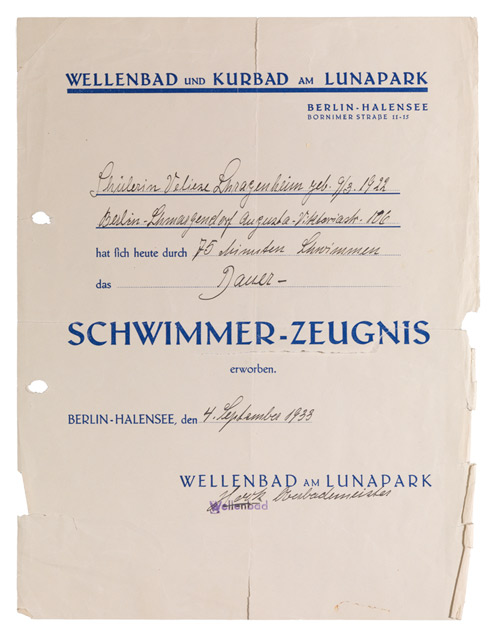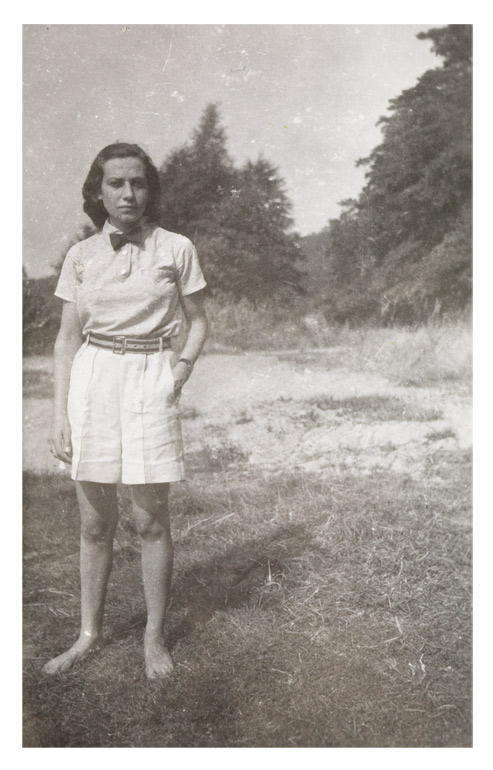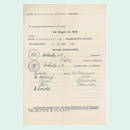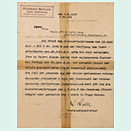Monday
4 September 1933
Swimming certificate from the Luna Park Wave Pool for Felice Schragenheim
The wave pool at Berlin‘s famous Luna Park, where on 4 September the eleven-year-old pupil Felice Schragenheim (1922–1945) passed her seventy-five-minute "endurance swimming" test, had been known as Europe‘s largest swimming pool complex since its opening in 1927. However, the National Socialists regarded the enormous amusement park on Halensee Lake as an "eyesore" and consequently forced it to close in October 1933. At the time Felice could not have foreseen that a few years later she, as a Jew, would be banned from using all public swimming facilities.
Felice Schragenheim was the daughter of the Berlin dentist Alfred Schragenheim and his second wife, Erna, who was also a dentist. Both parents died young. In the face of increasing antisemitic persecution, Felice began making plans to leave Germany in 1939 but did not manage to get out of the country. When the twenty-year-old received the order to report for deportation in autumn 1942, she went into hiding. For a time she survived by living in different places with falsified papers and working under a false name as a secretary. From May 1943 she hid in the home of her non-Jewish friend Elisabeth Wust (1913–2006), a mother of four whose husband was a soldier on the Eastern Front.
On 21 August 1944 Felice Schragenheim was arrested by the Gestapo and shortly afterwards deported to Theresienstadt. One month later she was transferred to Auschwitz and from there to the Gross-Rosen concentration camp. It is probable that when the camp was evacuated in January 1945 Felice was forced on one of the death marches to Bergen-Belsen and died either on the way or in the camp itself.
Lea Weik



